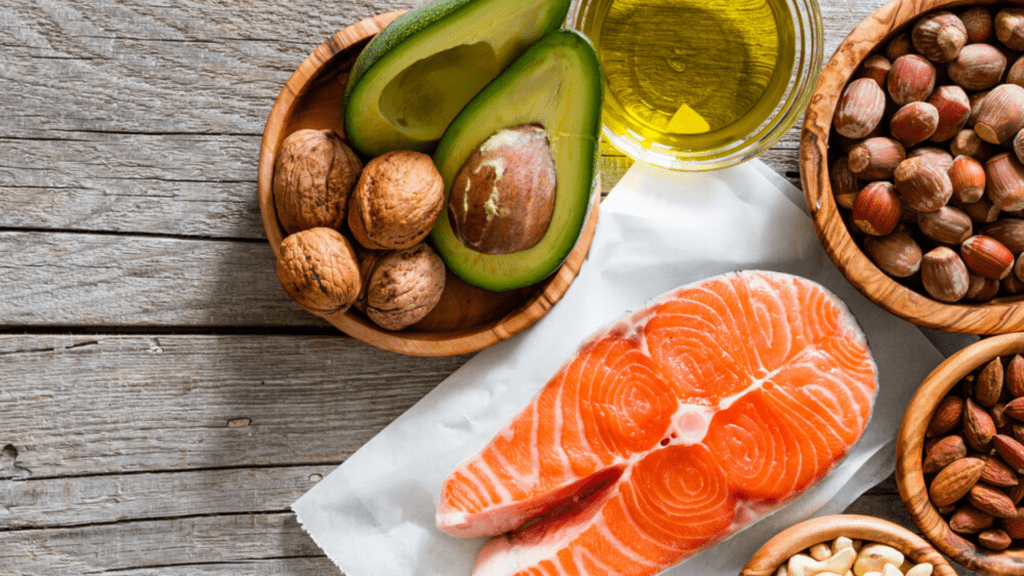In order to encourage lifestyle changes, Oldways a nonprofit nutrition organization developed the “Mediterranean Diet Pyramid” in 1993. The pyramid focuses on the food groups and their frequencies, how often you can eat food from certain groups without restricting anything and that’s the best thing about the Mediterranean style of eating, it gives you choices. Interestingly, the ground level of the pyramid emphasizes exercise, joyful movements and socializing over meals with friends and family.

Instead of considering exercise something strenuous that you have to go and do in a gym. Just get up the walk with family and friends. Play with children or simply dance in joyful movements. Plant-based sources of food that are arranged at the base of the Mediterranean diet pyramid give essential nutrients. Fibre, antioxidants and immune-boosting substances. That adds to general prosperity, satiety and the upkeep of a fair eating routine. These plant-based foods can be safely devoured more often and in high amounts. And they provide protection against the risk of various chronic diseases. And are ideal for weight management.

Base of the pyramid incorporates food groups that should be made the main part of the meals. And should be consumed to provide the highest percentage of daily energy needs. Foods to be consumed in moderation are situated at the upper levels of the Mediterranean diet pyramid. Food in this level belongs to animal origin. And are high in fats and sugar. And require careful consumption in recommended proportions. The Mediterranean diet pyramid builds up every day, week by week and periodic rules for an optimal and wholesome diet.
Daily Intake
| Food groups | Guidelines | Serving Size (per day) |
| Vegetables | Cater daily needs of key nutrients | One or two servings in one meal |
| Consume a minimum of 1 raw serving in one meal per day | ||
| Cereals | Consume unrefined whole grains | One or two servings in one meal |
| Provide iron, magnesium, zinc, copper, fibre, and B vitamins | ||
| Fruits | Focus on choosing a variety of colours | One or two servings in one meal |
| Variety in colour and texture optimizes intake of different nutrients | ||
| Dairy | Provide nutrients essential for strong bones. teeth, muscle growth | Two servings per day |
| Source of calcium, protein and other nutrients | ||
| Can be consumed in the form of low-fat milk, cheese and yoghurt. |
Fluid Intake
- Tea, coffee, green tea, fresh juices, soups and broths in addition to plain water cater the daily fluid requirements.
- Fluid needs vary according to gender, age, physical activity and weather.
- Average fluid needs of adult female are 2.2 liters/ day and for males it’s 2.5 liters/day
- To be more accurate you can calculate your fluid needs with the following formula
Fluid/day (L): Weight in kg x 0.033

Essential fats
Enriched with antioxidants, olive oil is situated at the centre of the pyramid. It should make up the main source of dietary fat. It can be used for cooking and dressing. When foods are cooked in olive oil their nutrient quality is enhanced. Daily consumption of a handful of nuts and seeds make up a wholesome snack. By providing, omega 3, fibre, proteins and other nutrients.

Herbs & Spices
Herbs and spices hold their importance when it comes to cooking. Along with their nutritional value, they also add unique flavour, aroma as well as colour to foods. Therefore, they should be incorporated into cooking. They offer the following benefits:
- Good source of antioxidants and nutrients
- Enhance flavor and palatability
- Reduce the need of salt in food.

Weekly
| Food groups | Guidelines | Serving Size (per week) |
| Fish & shellfish | Provides vitamin A, D and omega 3 fatty acids | Two or more servings |
| White meat | Contains zinc, selenium, iron, and B vitamins necessary for good health | Two servings |
| Includes poultry and turkey | ||
| Eggs | Provide high-quality protein | Two to four servings |
| Red Meat | Should be consumed in small proportions and lean cuts should be preferred | Less than two servings |
| Increased consumption is associated with the risk of cancer and heart diseases. | ||
| Legumes | Provide a healthy source of plant protein | More than two servings per week |
| Considered as a meat alternative |
Occasionally
| Food groups | Guidelines | Serving Size |
| Desserts and processed food | Contain unhealthy (trans) fats and are high in sugar | Consume these less often |
| High in calories and likely to cause weight gain | ||
| Include beverages, bakery items, fried foods, processed meats, cakes & pastries |
Why you Need Exercise?

Exercise is one of the most common pieces of advice offered by medics across the planet. But why physical exercise is vital for a healthy brain and body? To explain that we are going to focus on some of the direct benefits of exercise on the brain and the body. So physical exercise has been proven to have some of the following effects:
- Boosts the memory
- Physical fitness and weight loss
- Improves concentration and mental health
- Exercise improves the ability to focus on one task
- Physical exercise delays the onset of mental wear-and-tear in dementia. Especially among the elderly
- Lower risk of developing chronic conditions such as cancer diabetes cardiovascular and coronary heart diseases
- Improves heart and lung health. By strengthening the heart muscle and pumps blood at the lungs which become stronger in return.
- It increases muscle mass and strength
- Improves bone density, cholesterol levels. And reduces the risk of stroke
- Prevention and management of diabetes. Regular exercise can help delay or prevent the development of type 2 diabetes by 60 %. By enhancing glucose uptake. And by increasing insulin production
Any form of physical activity that helps the body burn calories. For example, walking, cleaning, running sports is beneficial. And should be included in daily routine.

